If you are trying to determine what type of plant you are looking at, you may be having difficulties telling apart daisy vs. chamomile plants. Given the fact that both of these plants are within the same family, how can you learn how to best identify chamomile when compared to the average daisy, and vice versa?
In this article, we will compare and contrast everything you need to know about daisies and chamomile so that you can have a full understanding of both of these plans. We will address what they are used for as well as where you can find them in the wild, as well as where they best grow in case you plan on planting either of these plants at home. Let’s get started and talk about daisies and chamomile now!
Comparing Daisy vs. Chamomile
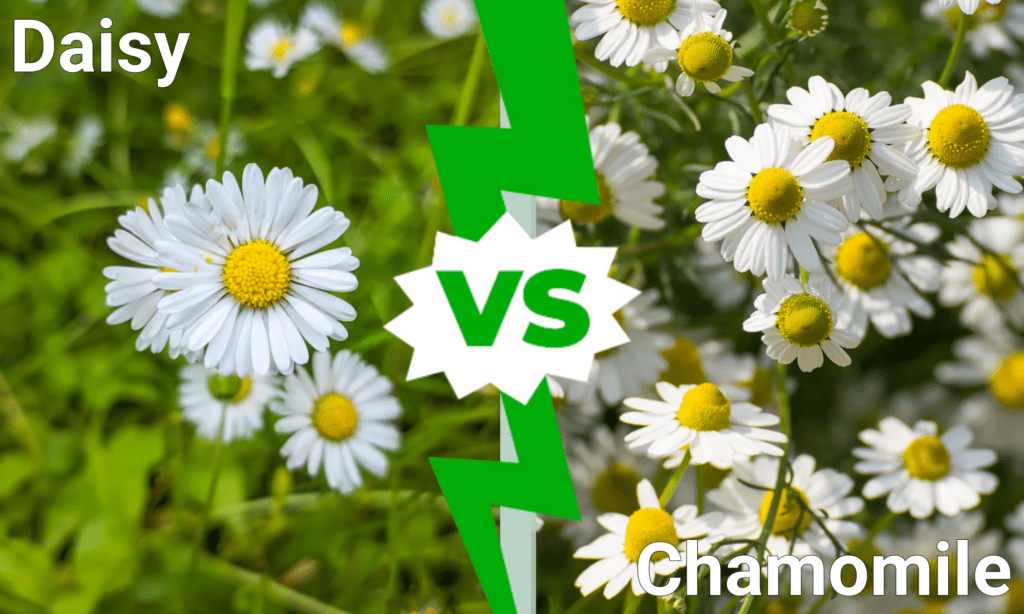
| Daisy | Chamomile | |
|---|---|---|
| Classification | Asteraceae, Bellis perennis | Asteraceae, Matricaria recutita |
| Description | It’s found in a variety of colors, sizes, and types, given that there are over 30,000 species in the daisy family. However, the common daisy grows 2 inches tall and less than 1 inch wide, spreading prolifically throughout lawns. A number of white petals surround a yellow center in multiple petal layers, on a leafless stem. | It grows anywhere from 6 inches to 3 feet in height, with a single layer of small white petals surrounding a yellow center. Skinny stems have even skinnier leaves on them, spindly and sporadic. Two different varieties of chamomile differ from one another in height and flavor. |
| Uses | It’s used culinarily in salads as well as an astringent for medicinal purposes. It has many vitamins and minerals. | It’s a popular tea used for anxiety and sleep promotion, as well as in beer or homebrewing. It’s also used in beauty products. It can react adversely with other drugs or substances as well as pregnancy. |
| Hardiness Zones | 4-8, but some exceptions | 3-9 |
| Locations Found | Native to Europe and Asia, it is now found everywhere except Antarctica. | It’s native to Africa and Europe, though grows throughout the United States along roadsides and in pastures. |
Key Differences Between Daisy vs. Chamomile
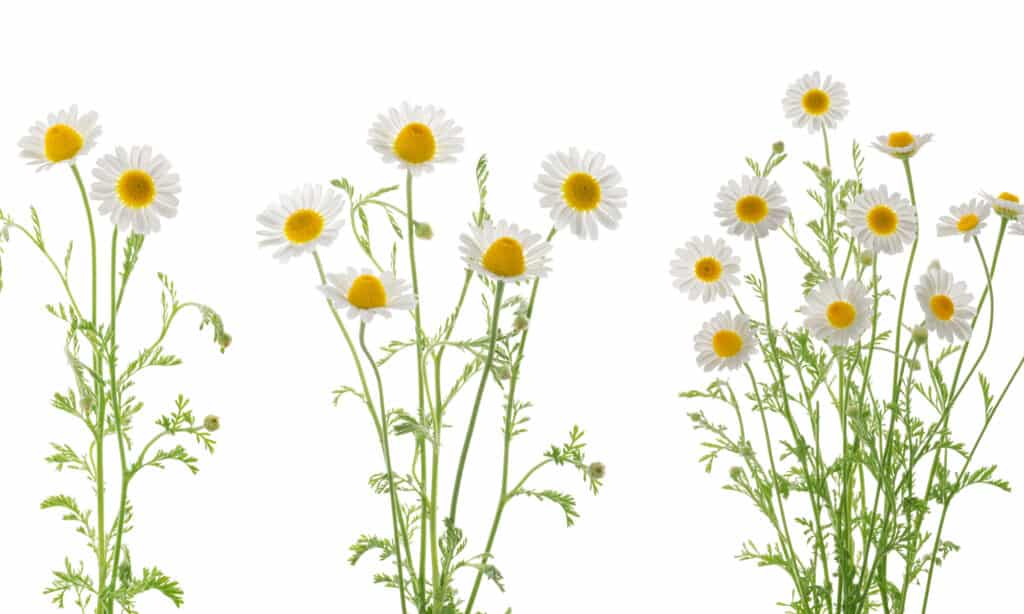
Daisies typically have multiple layers of petals compared to a single layer of petals on the chamomile plant.
©azure1/Shutterstock.com
There are a number of key differences between daisies and chamomile. While all chamomile plants are technically daisies, not all daisies are chamomile. When it comes to the common daisy, it is a significantly smaller plant than the average camomile plant. In addition, daisies typically have multiple layers of petals compared to a single layer of petals found on the chamomile plant. Finally, chamomile has skinny leaves on their stems, while common daisies rarely have leaves.
Let’s go over all of these differences and a few others in more detail now.
Daisy vs. Chamomile: Classification
One of the most important key differences between chamomile and daisy plants is the fact that they are members of the same family, which is Asteraceae. However, the chamomile plant has two different classifications, which are German and Roman chamomile, while daisy plants have more than 30,000 different possible species.
For simplicity’s sake, we will be comparing chamomile with the common daisy for our next section, which is the descriptive portion of this article!
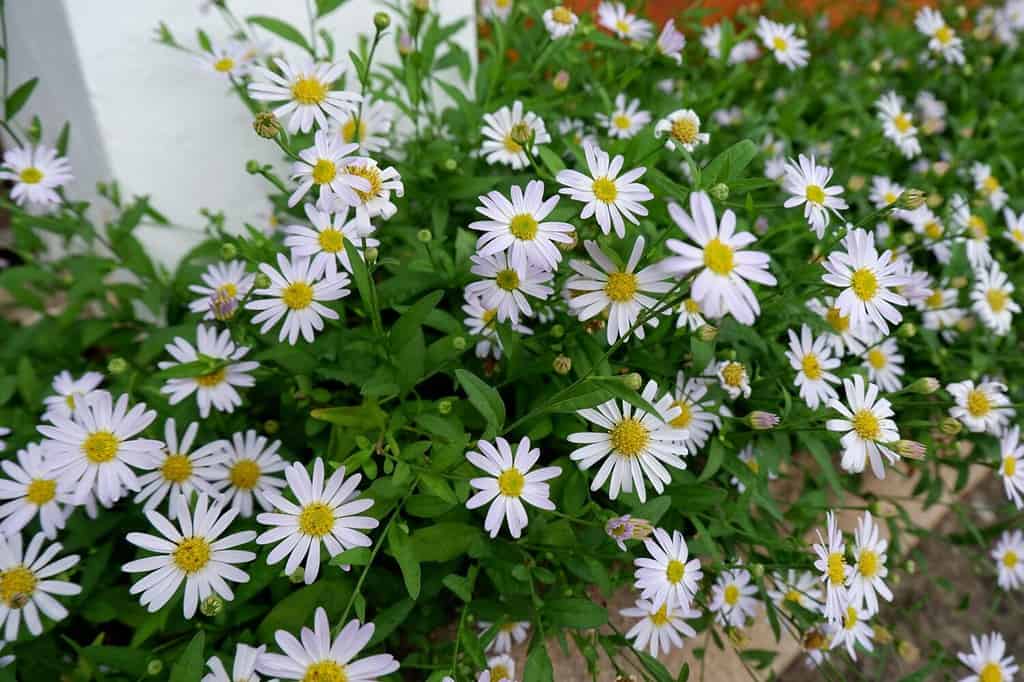
The daisy and chamomile plants are both members of the
Asteraceaefamily.
©NATTANAN KLOENPRATHOM/Shutterstock.com
Daisy vs. Chamomile: Description
The common daisy and chamomile plants look extraordinarily similar to one another, making it difficult to tell them apart. However, there are a few things to keep an eye out for should you happen upon either of these two plants while on a hike or foraging. For example, many daisy plants have multiple rows of thin white petals, while chamomile plants have a single layer of petals, also in white.
Additionally, most daisies, especially common daisies, do not have leaves on their stems, while chamomile has very thin and spindly leaves on their stems. Common daisies spring up in ground-cover-like groups, often reaching only 2 inches tall, while chamomile plants range in height from 6 inches all the way to 3 feet tall. One of the best ways of identifying chamomile when compared to the common daisy is to smell them, as chamomile has a very distinct scent compared to the average daisy.
Daisy vs. Chamomile: Uses
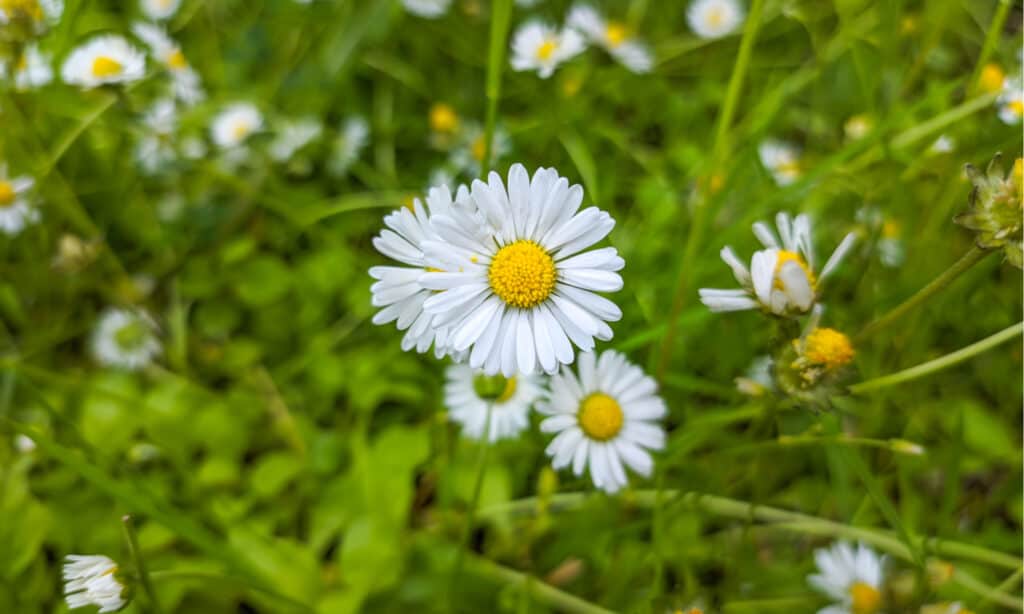
Many varieties of daisy have different medicinal uses when used as an astringent.
©1Y1/Shutterstock.com
Daisies and chamomile both have medicinal uses and specific things they have been historically used for. For example, chamomile tea is an extremely popular beverage to this day, while the common daisy is not frequently brewed up in your local tea shop. However, daisies have many different medicinal uses when used as an astringent or raw in salads, while chamomile is primarily used for tea and beer brewing purposes.
It is important to note that chamomile can have adverse reactions if taken while pregnant, and daisies should ultimately be avoided in medicinal form if you are pregnant. Otherwise, chamomile is fantastic for relieving anxiety and helping you sleep, while daisies are utilized for their vitamin content more than anything else.
Daisy vs. Chamomile: Hardiness Zones
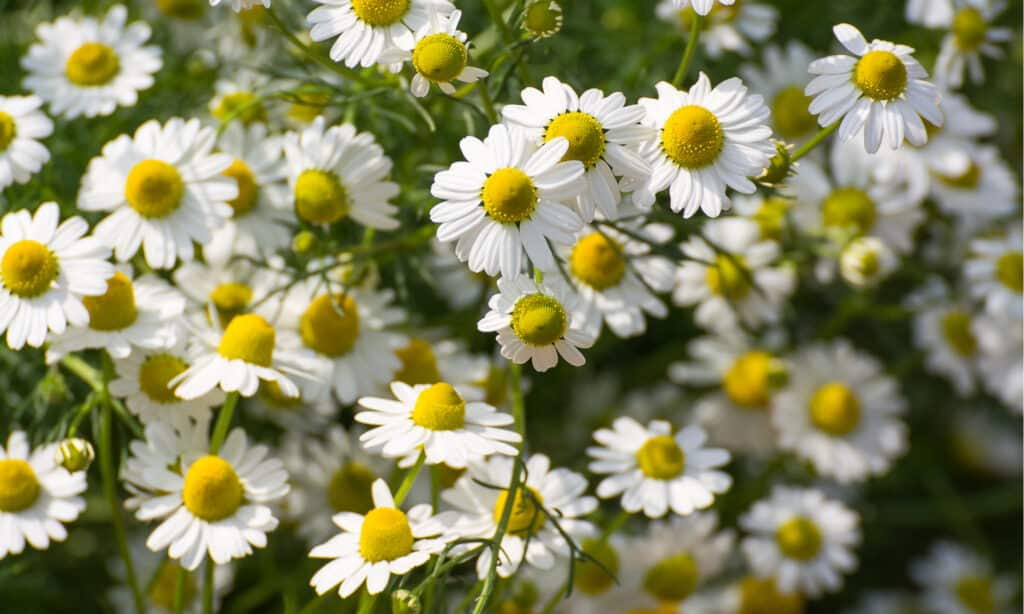
The average chamomile plant grows in zones, typically zones 3 through 9.
©Shan 16899/Shutterstock.com
Another key difference between daisies and chamomile has to do with the hardiness zones they belong to and where they best grow. For example, the common daisy grows best in hardiness zones of 4 through 8, while the average chamomile plant grows in more zones, typically zones 3 through 9. However, there are exceptions to every rule, and both of these plants grow prolifically in a number of areas around the world! In some areas, each of these plants are considered perennials, while in others they are grown as annuals.
Daisy vs. Chamomile: Locations Found and Origin
Speaking of all of the areas in which both of these plants grow, there are a few differences between the origin of chamomile and the origin of the daisy plant. For example, daisies are native to Europe and Asia, while chamomile is native to Europe and Africa. However, both of these plants grow prolifically throughout the world, though daisies are found on every continent except Antarctica, while chamomile is less prolific.
What Other Plants Can Be Mistaken for Chamomile?
As we’ve seen, daisies are extraordinarily similar to both German and Roman chamomile in many ways. However, there are other plants that are also often mistaken for chamomile.
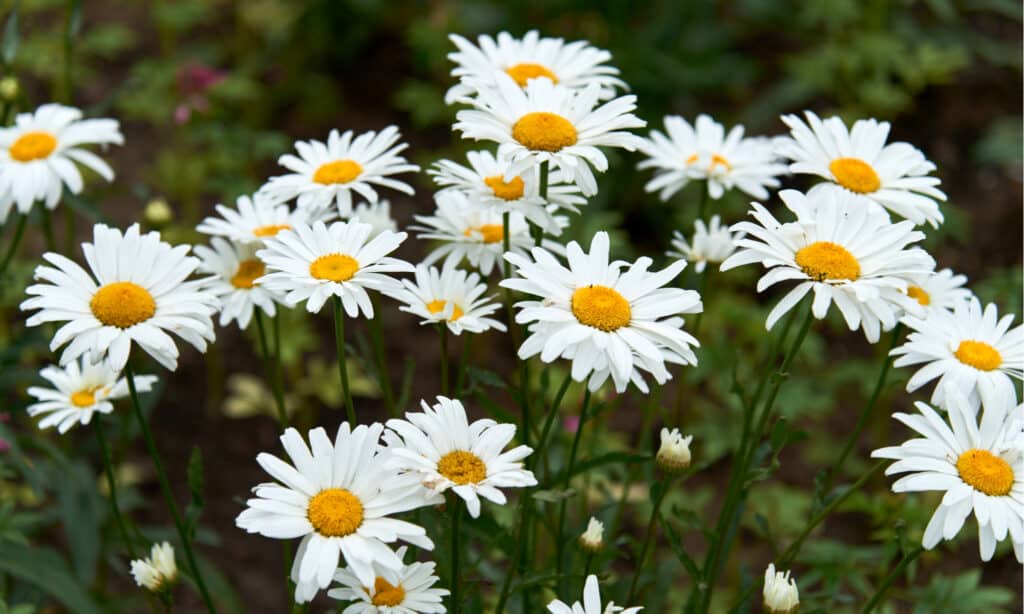
Although the ox-eye daisy resembles Roman chamomile, it is a perennial, whereas chamomile is an annual.
©Smyshliaeva Oksana/Shutterstock.com
1. False Chamomile (Tripleurospermum inodorum)
This plant is very similar to chamomile because it is a member of the same family: Asteraceae. Also known as scentless chamomile or scentless mayweed, the key difference is that it has no scent if you crush the foliage and smell it. Another way it differs from chamomile is that its center is conical to semi-spherical while German chamomile’s center is hollow.
2. Stinking Chamomile (Anthemis cotula)
Also part of the Asteraceae family, this plant has a similar bushy appearance to German chamomile. However, unlike German chamomile, the plant’s leaves and stems are hairless and it becomes dark red as it ages. Like scentless chamomile, this plant can be differentiated from chamomile by its scent — except this time, the smell is present and unpleasant. It is a weed that can be found growing by roadsides and in fields and meadows. It’s also poisonous and irritates animal skin.
3. Pineapple Weed (Matricaria discoidea)
While this plant resembles German chamomile from a distance and shares medicinal properties such aiding digestion and decreasing stress, it is shorter and has thinner leaves. It is another plant that can be differentiated from chamomile by its scent — instead of a more apple-like fragrance, true to its common name it smells like a pineapple. Like Roman chamomile, it is edible and its leaves can be eaten in salads.
4. Ox-Eye Daisy (Leucanthemum vulgare)
This plant is similar to chamomile as it is a member of the Asteraceae family, resembles Roman chamomile, has a yellow disc center, and its flowers can be used in herbal teas. However, the major difference is that it is a perennial, whereas chamomile is an annual.
5. Sneezeweed (Achillea ptarmica)
Another member of the Asteraceae family, this plant’s flowers seem to be similar to chamomile’s initially but are smaller. It is referred to as sneeze-wort, fair-maid-of-France, or goose tongue, and has a strong, pungent scent. Unlike the annual chamomile, it is a perennial that grows from June to October.
Other plants that bear similarities to chamomile include false sunflower (Heliopsis helianthoides), Dyer’s chamomile (Anthemis tinctoria), and Leucanthemum X Superbum ‘Brightside.’
The photo featured at the top of this post is © Irina Kozorog/Shutterstock.com
Thank you for reading! Have some feedback for us? Contact the AZ Animals editorial team.






